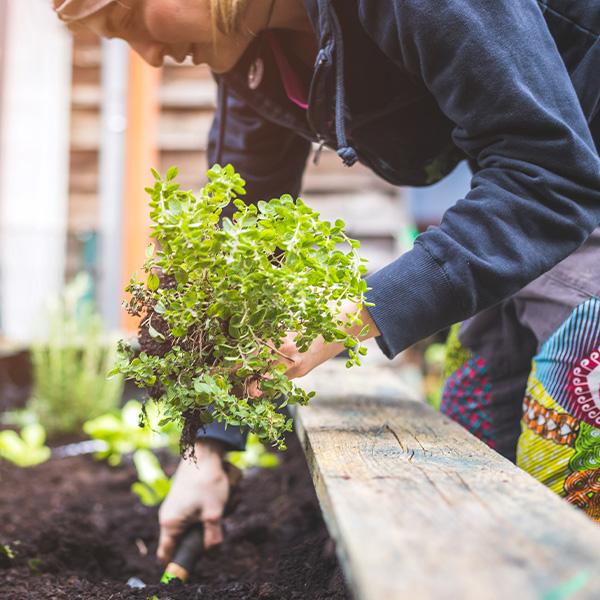
While gardening can be a relaxing pursuit, back pain is common among those with a green thumb. Gardening season may already be in full swing, but we're sharing some helpful tips on how to care for your body, just as you would your plants, while working in your garden.
Gardening is Hard Work!
Planting a garden isn’t just about getting your hands dirty. It involves a lot of bending, twisting and lifting. Therefore, it should be compared to other athletic activities for which warm-ups are a necessity. You wouldn’t run a mile without the proper stretching, or start pitching in a softball game without warming up your arm, would you?
Follow these quick tips that will help you prepare for a day in the dirt: (Hold each stretch for 10 seconds and repeat 3 times.)
- Bend forward like you are going to touch your toes until you feel a stretch in the back of your legs and lower back.
- Raise your clasped hands overhead. Lean to one side until you feel a stretch in the side of your trunk. Repeat on other side.
- Place your hands on your hips. Lean back until you feel a stretch in your lower back.
Protect Your Spine
Weeding and planting can take a toll on your spine. However, there are ways to put less strain on yourself and still get the job done.
- Never bend and twist your back at the same time.
- Take frequent breaks if you are going to be bending forward for long periods of time.
- Do some back bends during your break time.
- Consider using a stool to sit on to lessen the stress on your knees and spine.
- Raised beds are great for people who have a history of back pain.
- Keep your chin tucked to lessen stress on your neck.
Use Legs and Core – Not Your Back!
When lifting bags of soil, carrying water hoses, and digging with a shovel, it is important to concentrate on your core and your legs.
Low back pain is the most common injury seen in outpatient orthopedic physical therapy clinics. Proper lifting can keep you active in the garden and out of the clinic!
- DO make a plan before you lift - know where you are going and what you are going to do.
- DO lift close to your body.
- DO bend mostly at your knees and hips, some bending of the low back is actually okay.
- DO stand up like you are getting out of a chair, driving the movement with your legs and keeping your back straight.
- DO get help if you have to strain to lift.
- DO NOT bend and twist at the same time—these two combined movements are what lead to most lifting injuries!
If you do feel pain or suffer an injury, contact ATI Physical Therapy for a complimentary injury screening.
